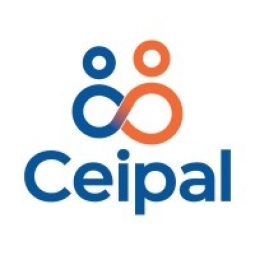技术
- 自动化与控制 - 人机界面 (HMI)
- 平台即服务 (PaaS) - 应用开发平台
适用功能
- 人力资源
- 质量保证
用例
- 需求计划与预测
- 视觉质量检测
服务
- 系统集成
- 测试与认证
关于客户
Quality Staffing of America, Inc. 是一家专门从事行政、客户服务和专业人员临时安置的人才派遣公司。该公司成立于 2013 年,专门为财富 500 强企业提供 MSP/VMS 人才招聘计划。他们的流程和技术旨在优化这些项目的服务。 Quality Staffing of America Inc. 是人力资源行业中转化率最高的公司之一,并与一些世界上最大的公司合作。
挑战
Quality Staffing of America Inc. 是一家专门为财富 500 强公司提供 MSP 计划的人才招聘公司,其现有的申请人跟踪系统 (ATS) 面临着一些挑战。尽管人力资源行业的转化率很高,但他们的 ATS 在整个招聘过程中对他们不利。该系统的用户界面较差,工作流程效率低下,这严重影响了繁忙季节的生产力。 ATS 的表现也不佳,客户服务也很差劲,导致该公司的许多投诉都没有得到解决。此外,该公司与 ATS 提供商签订了为期一年的合同,阻止他们根据需求扩大招聘人员规模。该提供商还对系统中的每笔交易收取费用,每年的账单总计增加了 12,000 美元。最后,ATS 提供商对每个 VMS 集成收费,这是在 MSP 领域运营的基本要求。
解决方案
为了寻找更具成本效益的 ATS,Quality Staffing of America Inc. 转而使用 CEIPAL。 CEIPAL 提供直观、可定制的界面,将工作流程效率提高了 50% 以上。该平台还具有强大的性能能力,将之前提供商需要一个小时的任务减少到几分钟。 CEIPAL 还提供 24/7 客户支持,确保任何疑问或问题得到及时解决。与之前的提供商不同,CEIPAL 提供灵活的按月订阅模式,使 Quality Staffing of America 能够根据需要扩大招聘人员规模。许可证价格也比以前的提供商便宜 80%。此外,CEIPAL 不收取 VMS 集成或交易费用,并且该平台已与 20 多家 VMS 提供商集成,无需额外费用。
运营影响
数量效益

Case Study missing?
Start adding your own!
Register with your work email and create a new case study profile for your business.
相关案例.

Case Study
Rapid and Simple Installation Provides Access to Critical Data
The customer needed to monitor non-contact alignment and non-contact process temperature in different positions along a 100-meter production line. Space around the line is tight and operators and forklift trucks are passing by constantly. Installation of correctly routed cables from sensors back to the control station would have been expensive and would have taken too long and caused too much disruption to ongoing operations.
Case Study
Real-Time IoT Tracking and Visualization Improve Manufacturing
Shimane Fujitsu, a wholly-owned subsidiary of Fujitsu and a leading manufacturer of business notebooks and tablets, set out to improve processes where factory inspections found product errors. Prioritizing product rework based on shipping date was challenging, and it caused Shimane Fujitsu to incur additional shipping fees. The company needed a way to collect data to better track the location of products in the rework cycle as well as monitor progress in real time. The collected data would also help process analysis for future improvements.

Case Study
Automatic Vision Inspection Solution for Product Traceability
With greater market demand for food safety, traceability is receiving increasingly more attention in the food and beverage industry as well as the packaging industry. One of the world's leading providers of beverage containers required a system to identify bar codes and alphanumeric characters on ink-jet-printed labels at a run rate of 7 units and minimum 99.9% accuracy. Since there were few engineers in the factory, the customer sought to implement a reliable system with an easy-to-use GUI for workers with a less technical background.

Case Study
Automated Inspection of Axial Piston Motors
Earth moving machines require an immense energy source to provide the power they need for use within civil engineering works. ‘Hydraulic Motors’ allow this power to be applied to enable the machines movement and in addition ‘Control Valves’ also provide the operator with the precise feel and control required to undertake the necessary tasks needed for such machines, including trenching, rock breaking and demolition. These same motors are also used in cranes, wheel loaders and general construction equipment. Though not a new product, the designs of such motors and control valves have been around a few decades, the overall method for manufacture has changed rapidly over the last few years to take account of the need for more modular designs, manufacture and just-in-time manufacturing. Kawasaki Precision Machinery (UK) Ltd based in Plymouth, UK is one of the leading manufacturers of such motors and pumps. They approached Industrial Vision Systems Ltd to come up with a solution to provide automated inspection of such pumps for their semi-automated assembly process. The pumps requiring inspection are at a sub-assembly stage when they are due for the inspection process to take place. Due to the highly modular nature of the construction each part of the pump can have many different derivatives which overall have a different effect on the pump in industrial use. It is therefore critical for the manufacturing process to check all components are the correct type and number for the construction of the pump to begin. Once built it is difficult and costly to rework such units if a fault is detected later in the manufacturing process, therefore automated visual inspection is critical for the success in building quality motors and pumps.

Case Study
Parts Quality Gets Robotic Boost
When manufacturers, such as the world's top car makers and automotive parts suppliers, produce components in their factories, traditional QA testing has been limited to verifying the quality of random parts pulled off the line throughout the day.It was time consuming to perform the detailed tests required, and defective parts could get through despite randomized tests.If a defective part caused a recall or accident, manufacturers could face costly litigation or irreparable damage to their reputation.
Case Study
Pepsico's Transformation to Smarter Sales Forecasting with Designer Cloud
PepsiCo, a global consumer packaged goods company, faced a significant challenge in calibrating sales forecasting to supply the right product quantities to its retailers. The sales forecast incorporated a variety of data, including warehouse data, store stock data, and promotional forecast data, all of which were provided by retailers in different file formats and delivered using various methods. The primary challenge was the speed of preparing a sales forecast. With the existing Microsoft Access and Excel-based processes, the time required to prepare this data was so extensive that analysts could only leverage it once a month or not at all. This inefficiency risked under or oversupplying retailers, potentially impacting PepsiCo's business operations and customer relationships.







